Arthur Charles Erickson was a Canadian architect and urban planner. He studied Engineering at the University of British Columbia and, in 1950, received his B.Arch. (Honours) from McGill University. He is known as Canada's most influential architect and was the only Canadian architect to win the American Institute of Architects AIA Gold Medal. When told of Erickson's award, Philip Johnson said, "Arthur Erickson is by far the greatest architect in Canada, and he may be the greatest on this continent."
Hubertus von Amelunxen is a philosopher, art historian, editor, curator, photography critic, and professor for philosophy of photography and cultural studies. Amelunxen has authored and published several books focusing on the history and theory of photography and has curated several international exhibitions. He served as president and provost at the European Graduate School, based in Saas-Fee, Switzerland, and Valletta, Malta from October 2013 until June 2018.
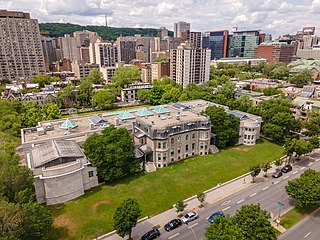
The Canadian Centre for Architecture is a museum of architecture and research centre in Montreal, Quebec, Canada. It is located at 1920, rue Baile, between rue Fort and rue Saint-Marc in what was once part of the Golden Square Mile. Today, it is considered to be located in the Shaughnessy Village neighbourhood of the borough of Ville-Marie.

Phyllis Barbara Lambert is a Canadian architect, philanthropist, and member of the Bronfman family.
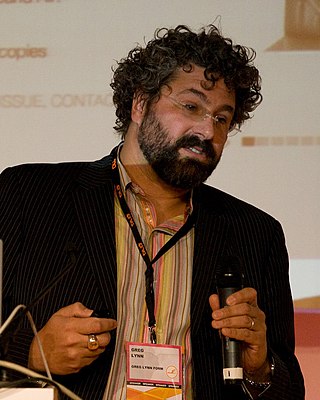
Greg Lynn is an American architect, founder and owner of the Greg Lynn FORM office, a Full Professor at the Institute of Architecture at the University of Applied Arts Vienna and a professor at the UCLA School of the Arts and Architecture. He is CEO and co-founder of the Boston based robotics company Piaggio Fast Forward. He won a Golden Lion at the 2008 Venice Biennale of Architecture. In 2010 Lynn was named a fellow by United States Artists. He is a member of the board of trustees of the Canadian Centre for Architecture.
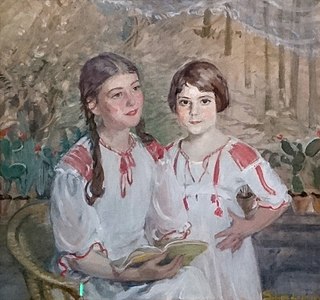
Cornelia Hahn Oberlander LL.D. was a German-born Canadian landscape architect. Her firm, Cornelia Hahn Oberlander Landscape Architects, was founded in 1953, when she moved to Vancouver.

Mark Antony Wigley is a New Zealand-born architect and author based in the United States. From 2004 to 2014, he was the Dean of Columbia University's Graduate School of Architecture, Planning and Preservation.

Ammar Eloueini is an architect who established AEDS | Ammar Eloueini Digit-all Studio in Paris in 1997. Since 1999 the office has operated with locations in Europe and the United States.
Ryue Nishizawa is a Japanese architect based in Tokyo. He is a graduate of Yokohama National University, and is director of his own firm, Office of Ryue Nishizawa, established in 1997. In 1995, he co-founded the firm SANAA with the architect Kazuyo Sejima. In 2010, he became the youngest recipient ever of the Pritzker Prize, together with Sejima.
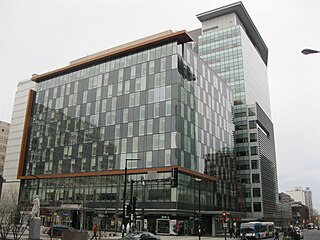
Quartier Concordia is a neighbourhood redevelopment project centred on Concordia University's Sir George Williams campus in downtown Montreal, Quebec, Canada. Bordered by Sherbrooke Street, Saint-Mathieu Street, René Lévesque Boulevard and Bishop Street, the district is designed to be a green urban campus that will improve the use and quality of public places and spaces, student life on campus and transportation.
Dimitrios I. Roussopoulos is a Canadian political activist and publisher.
Arcop was an architectural firm based in Montreal, renowned for designing many major projects in Canada including Place Bonaventure, Place Ville-Marie and Maison Alcan. The firm was originally formed as a partnership under the name Affleck, Desbarats, Lebensold, Michaud & Sise between Ray Affleck, Guy Desbarats, Jean Michaud, Fred Lebensold and Hazen Sise, all graduates and/or professors at the McGill School of Architecture. In 1959, after the departure of Michaud and the addition of Dimitri Dimakopoulos, another McGill Architecture graduate, the firm was renamed Affleck, Desbarats, Dimakopoulos, Lebensold, Sise which it maintained for a decade afterward. The company did not adopt the name Arcop, which stands for "Architects in Co-Partnership", until 1970.
Lionel John March was a British mathematician, architect and digital artist, perhaps best known for his early pioneering of computer-aided architecture and art.
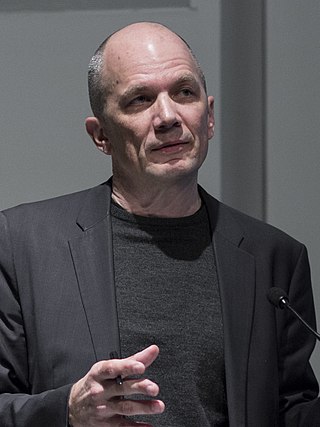
Michael Maltzan is the principal architect at Michael Maltzan Architecture (MMA), a Los Angeles–based architecture firm. He received a Master of Architecture degree from Harvard University and both a Bachelor of Architecture degree and a Bachelor of Fine Arts degree from the Rhode Island School of Design. Maltzan was selected as a Fellow of the American Institute of Architects in 2007.
Giovanna Borasi is Director of the Canadian Centre for Architecture (CCA) in Montreal, Quebec, Canada since 2020. She first joined the CCA as Curator for Contemporary Architecture in 2005. Borasi was educated in architecture, and has worked as a writer and editor in addition to her curatorial activities.
Hilary Sample is an American architect, principal, and co-founder of the award-winning architecture firm MOS Architects in New York City.

Guido Guidi is an Italian photographer. His work, spanning over more than 40 years, has focused in particular on rural and suburban geographies in Italy and Europe. He photographs places that are normally overlooked. His published works include In Between Cities,Guardando a Est,A New Map of Italy and Veramente.
Borasi is a surname of Italian origin. Notable people with this surname include:
Eve Blau is a historian and scholar who teaches at the Graduate School of Design at Harvard University as a Professor of the History and Theory of Urban Form and Design, as well as Director of Research. Blau has contributed to scholarship on the history of architecture and urban design. In 2015 she received the Victor Adler State Prize from the Austrian Ministry of Science, Research, and Economy for her work on Red Vienna and her book The Architecture of Red Vienna: 1919-1934. The Victor Adler State Prize is given for scholarship that is distinguished by its interdisciplinary breadth, use of innovative methods, contemporary historical questions, and that is widely published. In 2018, she was named Fellow of the Society of Architectural Historians and in 2022, she was inducted into the American Academy of Arts & Sciences.
Robert Burley is a Canadian photographer of architecture and the urban landscape. He is based in Toronto, Canada, and is a Fellow of the Royal Society of Canada.









